Smith & Wesson Military & Polis is a revolver without flaws.
History this revolver is the best evidence that no man is only smart. Fate always measures out its portion of stupidity to him, and it always happens. That is, in some ways he is as wise as ... and in others - well, a fool! Here is Samuel Colt - the creator of the most popular revolver in the United States, who personally carved its model out of wood, who created the city of Coltsville - where women (!) Performed the work of smoky, muscular blacksmiths on the most modern machines, an excellent specialist in advertising and marketing, not realized the benefits of what was first offered to him by Rawling White in 1855, on April 3, who received a patent (patent number 12608) for a revolver with a through-hole drum. But he did not have money for the development of production, and he sold his development to Messrs Smith and Wesson. Less than a year later, they created the world's first revolver using this scheme: the Smith & Wesson Model 1, produced in 1857-1882.
Revolver "Military & Police" during the Second World War.
Meanwhile, Colt died, and his widow and… Mr. William Franklin, who was appointed by her company vice president in 1865, had to deal with the consequences of his short-sightedness. He tried to buy Rollin White's patent on a drum with end-to-end cameras from Smith and Wesson, arguing that its validity period was about to end, and they could make the same revolver. However, the remaining three years in the arms business until the end of the term of the patent is a long time. Therefore, he invited his engineer Friedrich Tyr to come up with something that would allow them to bypass White's patent and convert all the old blasting pistols into cartridge cartridges. As a result, it turned out a revolver, loaded with cartridges without rim from the front end of the drum. Alteration of existing samples seemed to be not difficult - only the drum itself was changing, and the firing pin for the primer was riveted on the trigger. Moreover, the drum didn’t have a through drill because the Tyur cartridges were inserted into its chambers with an effort from the front and were held in them due to friction between their walls and the bullet protruding from the sleeve. The revolver had a stopper of the hammer striker, thanks to which he could turn off and unload the revolver by successive pressing the trigger and striking the trigger on the drum. At the same time empty cartridges or unused cartridges were thrown forward from it.
Revolver "Smith & Wesson Model 1"
Why was this done? Because Smith and Wesson had previously bought a patent for the automatic ejector of Charles A. King, and no other company could use it at that time! So, as always happens in our life, just one wrong step set in motion a whole avalanche of circumstances that covered the firm of the widow of Colt literally with her head and almost became her grave. The military inertia of the military saved the company - the very name of the Colt was well known to them, and they agreed to remake revolvers at a cheap price, rather than pay more, even if for higher quality goods to no one particularly unknown manufacturers who supplied their products to ... distant Russia, where, as everyone knew, people drank vodka directly from a samovar, and bears were walking so straight through the streets ...
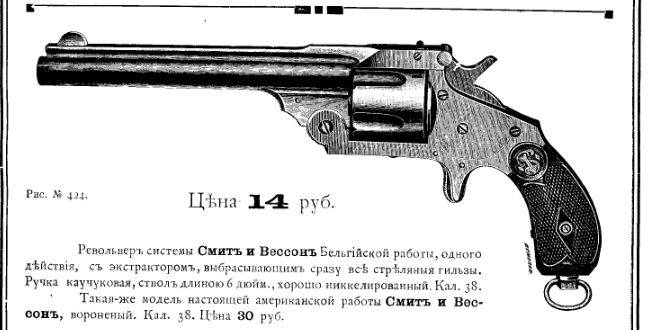
Advertising of the civil models “Smith and Wesson” in the Russian press of the early twentieth century.
Meanwhile, the Smith & Wesson Model 1 is a 7-round .22 Short revolver, and the first commercially successful model to use a rimfire cartridge instead of a separate chamber loading, turned out to be truly revolutionary. weapons, though outwardly rather nondescript! The design feature, in addition to the through-drum, was also a barrel, folding up on a hinge, a removable drum and a single-action firing mechanism with an original nipple descent. By the way, it was discharged for quite a long time: it was necessary to beat out the spent cartridges from the drum, pushing it onto the extractor under the barrel! But if you had a second charged drum, then reloading it was a matter of a few seconds - the time for the Colt is unattainably fantastic!
Then the automatic King Extractor went into effect, and so the famous Smith and Wesson came into service with the Russian imperial army!
In 1876, American newspapers wrote that if the cavalrymen of General Custer's detachment were Smith and Wesson's revolvers, and not the primitive Colts Peacemakers (the White patent had already expired and so the Colt is a Peacemaker) , the defeat of the Little Big Horn just would not happen!
Revolver "Colt the Peacemaker", an artillery model.
It is clear that after such a reprimand, the US military took up their minds and began to look at this company with very different eyes!
Meanwhile, the "critical mass" of inventions, to which again no one paid attention, began to grow rapidly! So, in 1862, Daniel Moore took a patent and even released some revolvers, in which the barrel along with the magazine could be rotated left and right in such a way that the breech drum part was opened for one cartridge and, thus, rotating the drum, the revolver could recharge.
Moore's revolver
Bacon Hopkins, (1862, US pat. No. 35419) produced 300 revolvers .38 caliber with a six-fold folding drum, hexagonal barrel and nipple descent - a very modern design for that time.
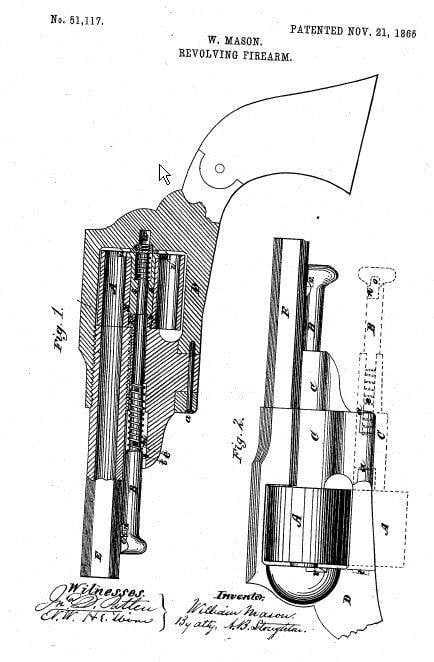
A patent by W. Mason (1865, US pat. No. 51117) appeared, in which the axis of the drum was spring-loaded. At the end under the barrel was a wooden "cap", pulling which, this axis could be removed from its nest and fold the drum to the side for reloading. But none of the masters paid any attention to this innovation!
Finally, Levo, in 1873, patented a revolver with a flip-up drum and a pusher pin for alternately pushing the sleeves, here, apparently, the inertia of thinking affected. Well, without a pin ...
And then in France the Saint-Étienne 1892 revolver was built, and in it, now the regular revolver of the French army, the drum was finally made leaning to the right. Right, because it was more convenient for the cavalry! The drum extractor was manual and was on the axis of the drum! The revolver was running from 1893 to 1965 for a year and, despite all the complaints (for example, a small caliber and a weak bullet action were to blame), proved to be quite an effective weapon.
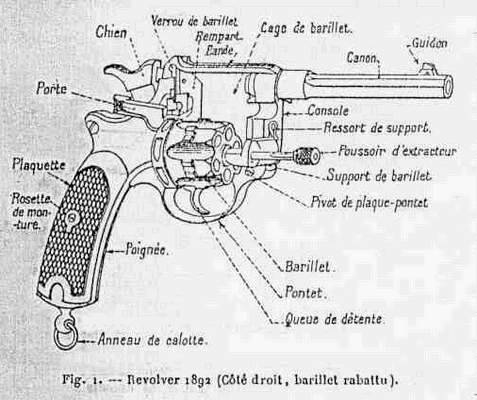
Outline of the Saint-Etienne revolver 1893 of the year.
So ... all that was left was to put it all together, sit down to think and make a "revolver without flaws." And the engineers of Smith and Wesson just made such a revolver - the story prepared everything for its creation, and back in 1900 there was a government order for an official 0.38 caliber revolver for the army and fleethowever, in the amount of only 2000 copies. The model received the designation “Armie-Navi,” but no other orders were first followed, as the war in the Philippines showed that the stopping action of a new revolver's bullet was worse than that of the New Service colt .45 (11,43 mm) caliber. But here the production of this revolver was supported by the fleet with its purchases. The naval officers liked him exactly: powerful enough, but not too heavy, but they rarely had to shoot him!
"Military & Police" with the drum unfolded. Front view.
Back view.
And this is how it looks when it is in hand.
But even more the new "Smithwesson" liked the American policemen. They were in service at that time was the Colt "New Police" arr. 1896 caliber .32 (7,65 mm). It was a light and handy weapon, but the stopping effect of its bullet was small. Larger caliber revolvers were heavy and cumbersome, but this one was just right. And the police began to order them along with the fleet, and orders are money, and money is the possibility of further improving the model. By 1905, it had been improved seven times! For example, in 1902 it was adapted for the stronger .38 Special cartridges. All this gave reason to rename the revolver, which just from 1905 became known as "Military & Police" (that is, "military police"), without specifying its "naval" origin. Finally, when in 1957 all Smithwessons were numbered, this revolver was given number 10. It is underneath that it is produced ... still!
Work as an extractor.
The design of the revolver is simple and therefore technically perfect. First of all, we emphasize that it has a closed frame and therefore is stronger than the same "turning" revolvers "Enfield". The drum for six rounds he leans to the left after pressing the latch button on the left side of the frame behind the drum, which is easy to do with your thumb. The trigger mechanism of a double-action revolver, with an open trigger and a drummer located on it. Sights are very simple: a semicircular front sight, made integral with the barrel, and the rear sight is a longitudinal groove on the upper part of the frame. The extraction of the sleeves is carried out by pressing the hand on the spring-loaded extractor rod - that is, you can not think of a simpler mechanism!
Comparative sizes of revolver and "Military & Police". As you can see, outwardly, they look almost the same in size. The Smithwesson has a slightly longer barrel and barrel, but that's where it ends.
During World War II, the revolver was first produced for the British armed forces under the designation "K-200" or ".38 / 200" (gran 200 bullet weight) 9,65-mm caliber, and they were released from 1940 to 1946, 890000 copies of the year! The “military and police model” was first produced with a blued coating, but during the war years it was no time for delicacies, so they switched to coating with phosphate coating, the cheeks of the handle became smooth without any brand emblems, and they attached an attachment for the belt to the bottom. These revolvers were supplied to all branches of the armed forces of the British Commonwealth, as well as guerrilla groups. Since 1941, Smith and Wesson began to supply the Military and Police Model revolvers and US forces. Revolvers of wartime received the name "Victory" ("Victory") because of the letter "V", facing serial numbers.
That's how it lies in the left-handed hand. Well seen brand name.
The Victory revolvers were produced with barrels four inches long (102 mm) and five inches long (127 mm), and for the US Army only six-inch barrels. True, the 45 caliber surpassed these revolvers in the stopping power of the bullet. But many military men, not to mention the police, did not need such deadly power!
And so - right handed.
In total, Smith & Wesson has produced over 6 million Military & Police revolvers and about one million Victory models. In addition, copies of them were produced in other countries, so it is simply impossible to accurately calculate how many of them were produced in total! Known revolvers with barrels 51, 102, 127, 152, 165 and 232 mm long - that is, for all occasions and for every taste. Calibers used in revolvers of this type: .38 Special, .38 Long Colt, .38 / 200. The weight of an unloaded revolver with a five-inch barrel is 880 g.
Purely personal impression of revolvers: by weight they are about equal, but for some reason our gun seems to be heavier. The “American” fits well in the hand, both in the left and in the right. His handle is definitely more convenient than Naganovsky. After the "shooting" of a pair of drums of a revolver, the author had a callus on his finger, well, and at the Smithson the descent is surprisingly easy. The drum rolls back very easily and the extractor works on it just as easily. In a word, with this revolver "to fight is easy and pleasant" (as far as it can be easy at all!), But I would advise the revolver to use my evil enemy!
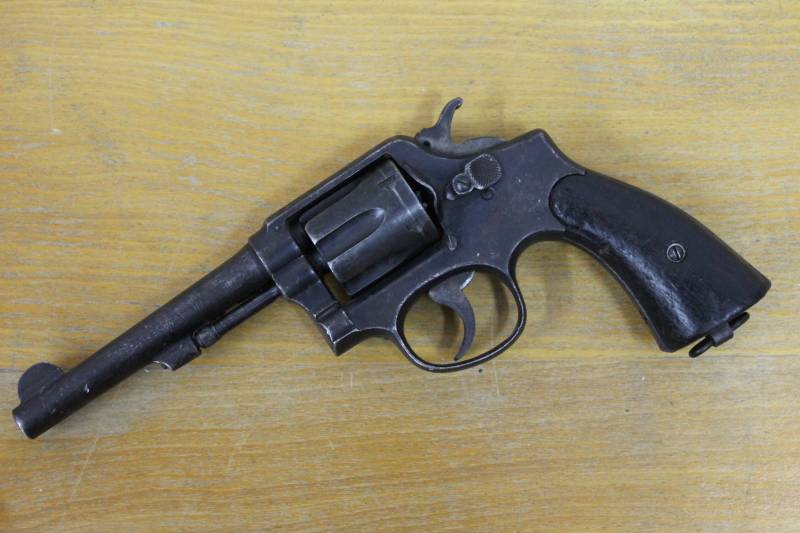
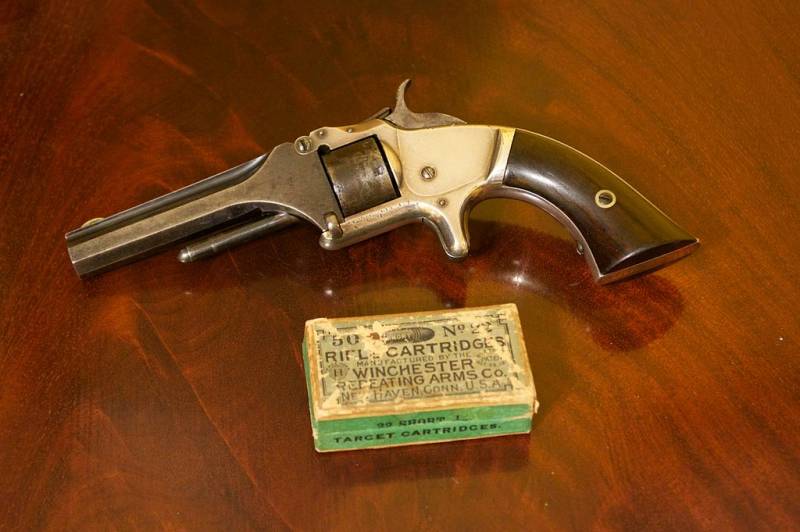
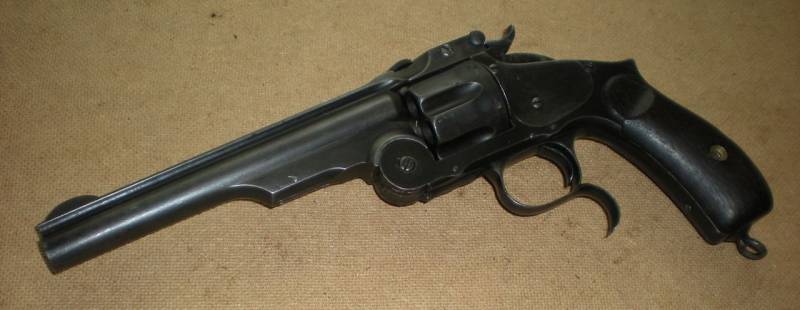
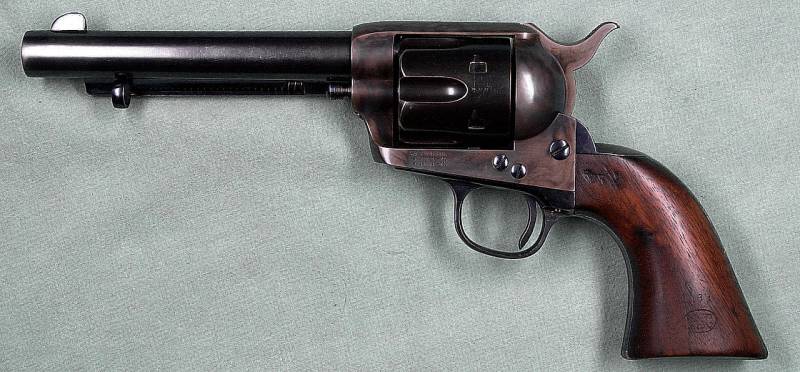
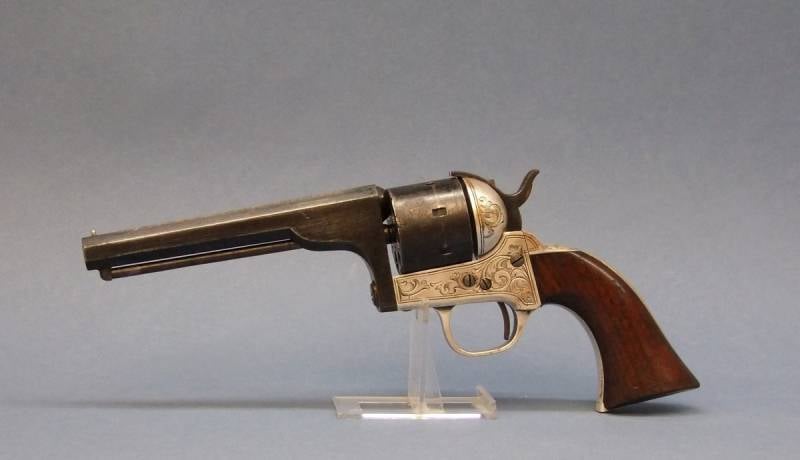
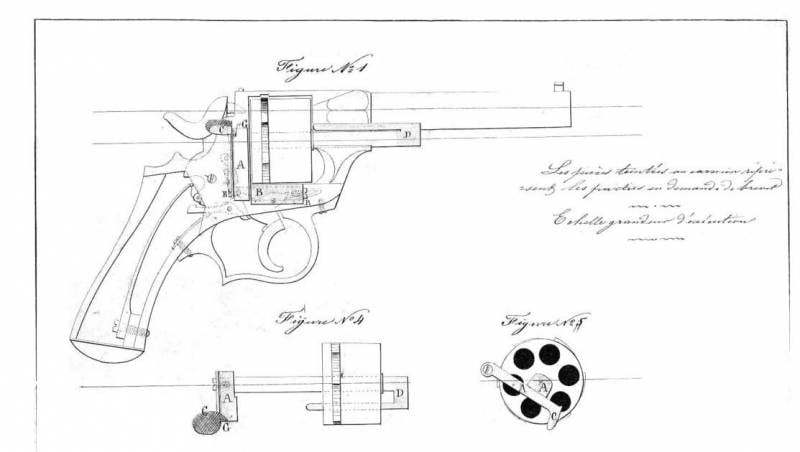
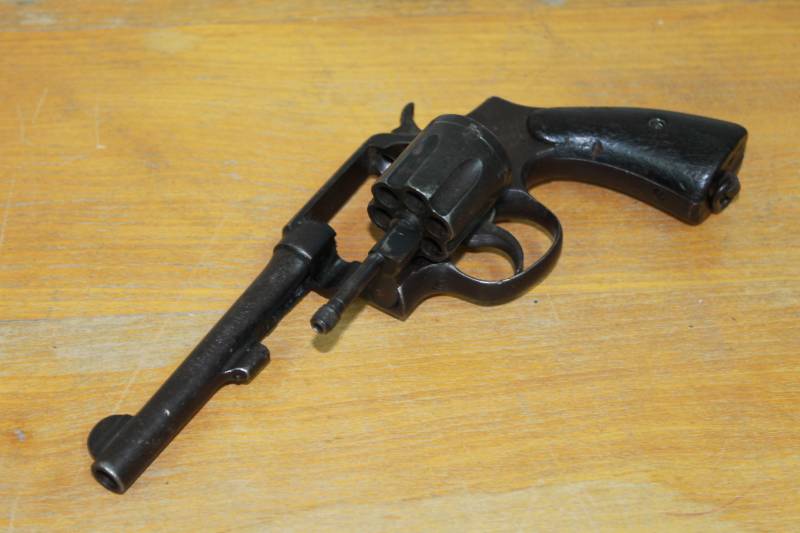
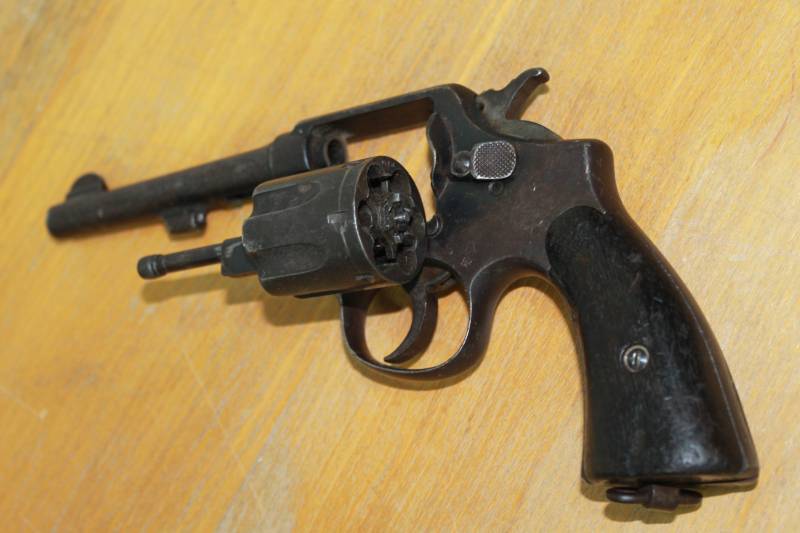
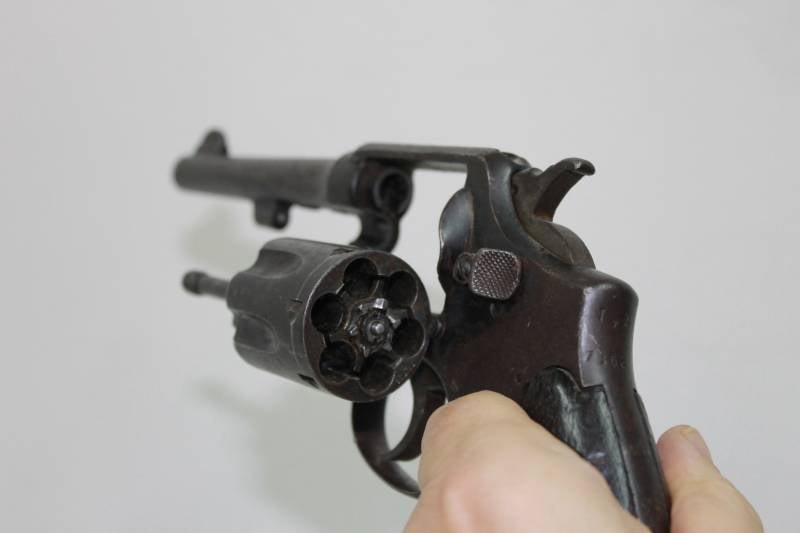
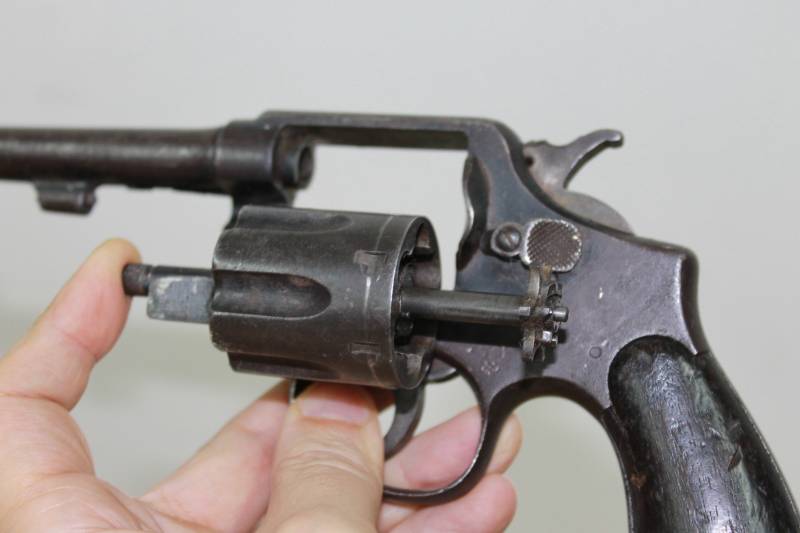
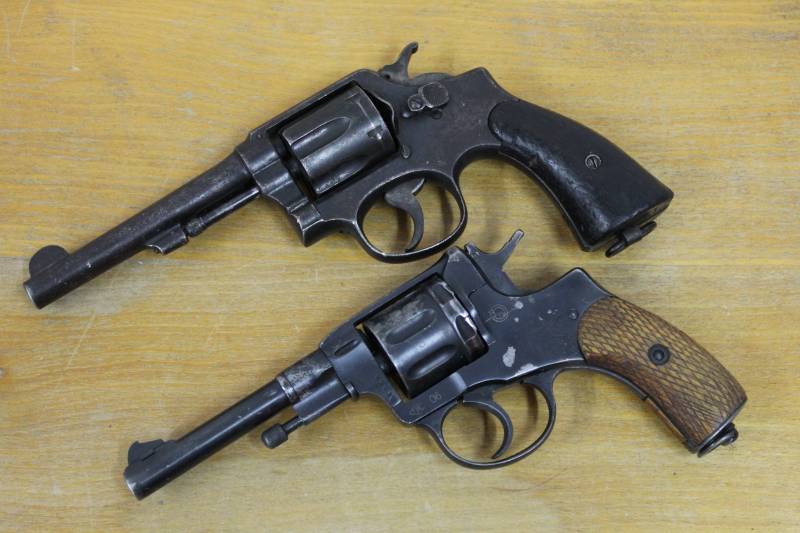
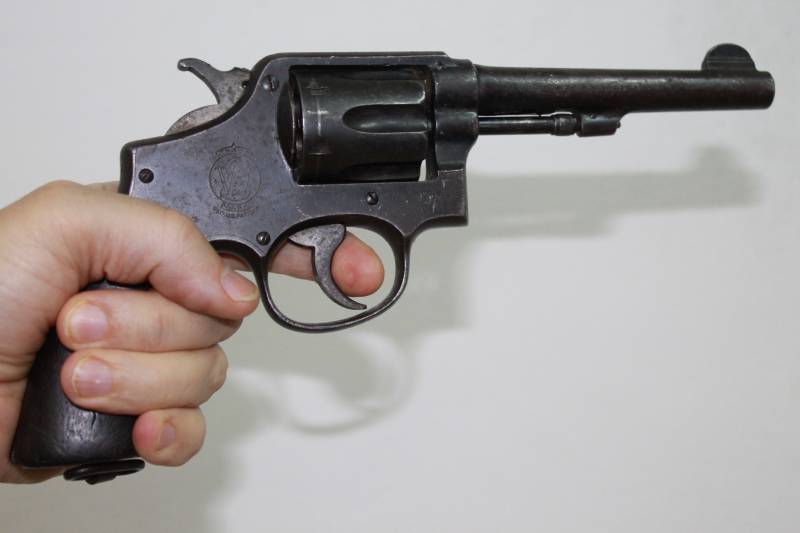
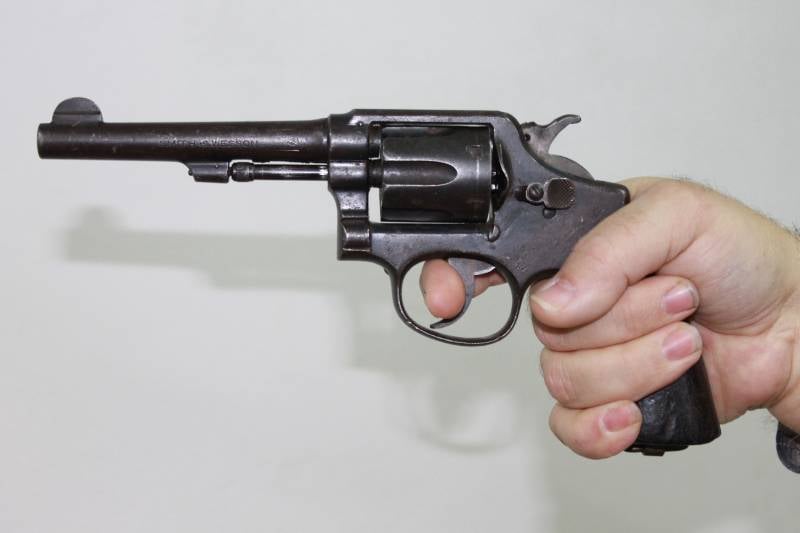
Information